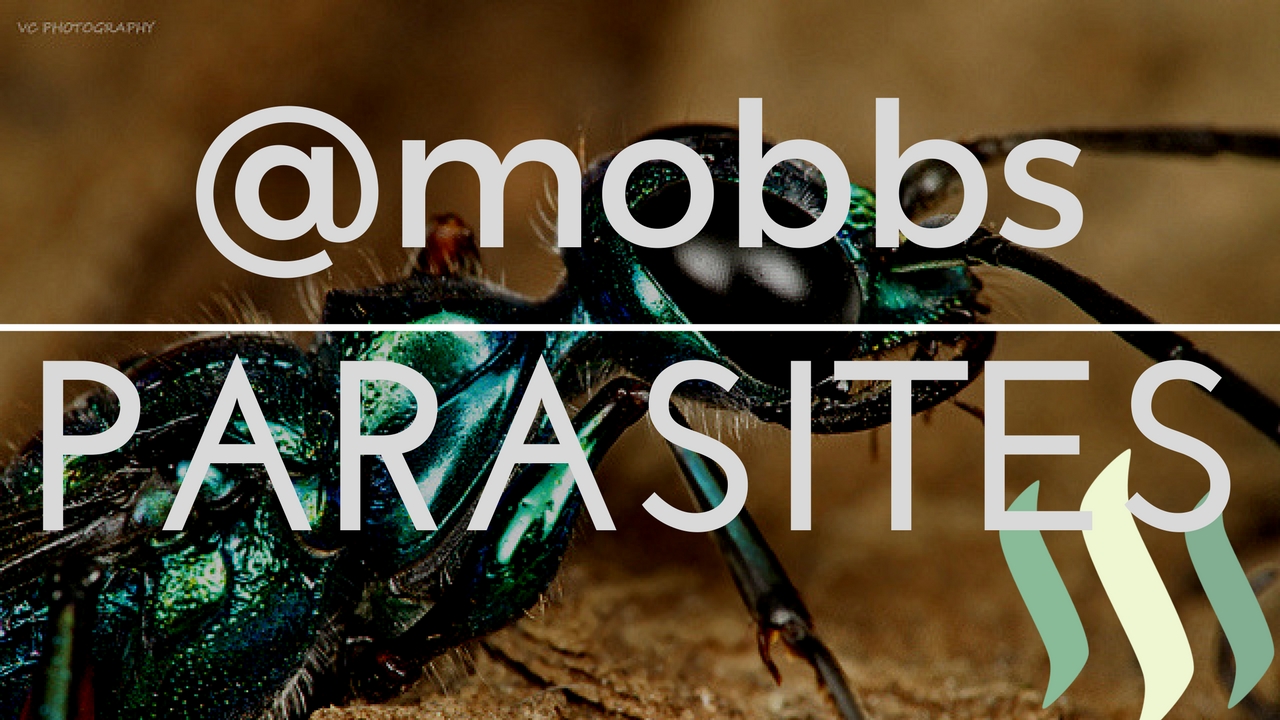PARASITIC SYMBIOSIS - Evolution from Hell, Part 1

Previously:
Convergence
Stupid Design
Weird Evolution
The Axolotl
Mutual Symbiosis
In the last episode, we looked at Mutualism in Symbiosis – a natural process in which two separate species evolved in a way that they physically interact and benefit each other in the fight for survival and reproduction.
But I also said not all symbiosis is equal. In some cases, it’s completely one-sided. This is Parasitism, better known as my last rela – ok too easy.
Parasites are well known, from wasps to mites, fish to flowers, bacteria to, well, humans. All of them spread disease, some devastatingly so, but that’s not typically their intent. Their intent is to get as much stuff out of one thing whilst giving as little back in return.
Nature has come up with some incredible ways to achieve this. So let’s take a look at some of the freakier ones. First up: insects. Typically, insect parasites either look disgusting or do disgusting things so if you’re faint of heart, give up now. This is a place of nightmares.
Insects
Insects are the most notorious parasites. In fact, when we think of parasites, the first image in our head is some small, many-legged exoskeleton freak sucking on our blood. Well I think blood sucking is cliché. Bugs are far more innovative than that.
Botfly
This is a botfly:

Source
And here is a baby botfly:

Source
Botflies are from South America and like to incubate baby botflies under the skin of mammals, including humans. I decided against putting a video of human victims, but this is the basic process on a squirrel:
A botfly will typically grab a horsefly or mite or whatever, pin it down and attach a bunch of eggs to the smaller insect. That insect then lands on the mammal, the larvae drop onto the skin and promptly burrow underneath. The larvae may grow under the skin, but if the area is touched or rubbed by the animal from irritation, it’ll happily go into the digestive tract and stick onto the gut lining for about a year before coming out the other end.
The larvae don’t always kill their hosts, but when you’re a little squirrel, the damage can be fatal. Putting size aside, infections and other issues can and do often kill animals as large as horses and cows.
All things considered, this guy doesn’t seem to mind:
And hey, certain human tribes and cultures have been known to eat them in return, so perhaps it’s mutual after all.
Wasps
There are many kinds of parasitic wasps. They’re generally quite small, no more than an inch and this wasp family includes the smallest known insect of all, the Fairyfly (0.5mm)

Source
so cute
Depending on the wasp, they might infect an egg, larva or adult host. The wingless Emerald Jewel wasp specifically chooses adult cockroaches several times its own size. It achieves this by sniping the back of the cockroach with paralytic anesthetic.
Now it’s easy to do whatever; a second sting goes into a very specific location in the roach’s brain. This blocks signals carried by dopamine, turning it into a zombie @suesa.
Now the roach obediently follows the wasp into her little burrowed cave where she drinks some of its blood for lunch, lays her eggs on it and then leaves, burying the roach and eggs alive inside with pebbles. The hatched babies will eat the roach from within but be very careful to keep it alive as long as possible during this time. A cocoon will be made inside the body and the roach will hopefully be dead when the wasp crawls out.

source
Nice.
Worms
Worms are super parasitic, and really diverse. You’ve got your hookworms, flatworms, tapeworms, whipworms, roundworms, pinworms SING ALONG, guys!
The guinea worm found in Africa and India is a little special. After being eaten by a flea or some other water bug, an animal will drink them up and kill it in digestion. Once the bug dissolves, the worm inside crawls out and lives there for a year or so until it’s a metre in length.
Then it will dig its way up to the animal’s skin surface and create a painful sensation that makes the animal go to water for relief. It then releases its eggs to repeat the cycle.

Source
You’ll be pleased to hear that cases of guinea worm have gone down from 3 million in 1980 to 2 in 2016. Not 2 million, 2. You can thank Jimmy Carter for that.
The horsehair worm has a different approach. After growing up to a foot long inside an insect (yeah that’s possible), it’ll actually reprogram the insect’s brain to essentially commit suicide by rushing into water. As the insect drowns, the worm slides out to reproduce.

Source
Another worm, the filarial worm, can cause terrible conditions in humans such as elephantitis, river blindness, anorexia, chronic infections, cysts, tissue damage and more.
These worms specifically target humans, as they are with 9 other similar species in several other families. Thanks, God.
Ascarid worms
This worm deserved a section all for itself. I did not have fun searching for images of this. Feel free to check for yourselves…
This worm initially infects raccoons, but make no effort to harm it. A raccoon can life its entire life without noticing. However, being in close proximity to any other of its potential hosts – definitely including humans, and it will swiftly work its way up to the new host’s brain and is fatal even to humans. With smaller animals it causes seizures, allowing raccoons to catch and eat it, repeating the process.
A slightly different Ascarid worm will get inside a human via dirty food, and literally eat its way through your intestines and into your lungs causing fatal pneumonia. But if you were unlucky enough to survive, you’ll just have a permanent cough, designed to cough up phlegm, which you then swallow and bring more babies back to the stomach to repeat the process until you die.
These and other worms, by the horrifying looks of it, can completely fill up intestines and stomachs. Be wary. Worms, bot flies, wasps, they all start off microscopic. These things can be eaten, drunk and even inhaled. They can get in through your skin or up your nose. Only then will they grow into the monsters you have witnessed today.
Sleep well!
Parasites cover a wide range, so I want to look into far more ingenious ones in a second episode, even smaller than insects. Some seem to defy all logic, making you consider that maybe evolution has an evil mastermind behind it all. But until then:

Source
.gif)
Am I giving you ideas? :P
I have nature for all my horrifying inspiration. Don't need your freaky mind
Naw :( btw I finally decided to follow you
You didn't already?? =O
Thanks ^__^
Interresting! I will follow.
Have a look at my page, i'm an astrophographer !
https://steemit.com/photography/@clodoweg/horsehead-nebula-ic-434
Thanks, I'm following and I love your shots! Real impressive stuff. I've casually studied astronomy for a long time, so I'm glad you came by ^__^
Nature is a beautiful place indeed. It seems that its the creation of a malevolent creator with a retarded plan!